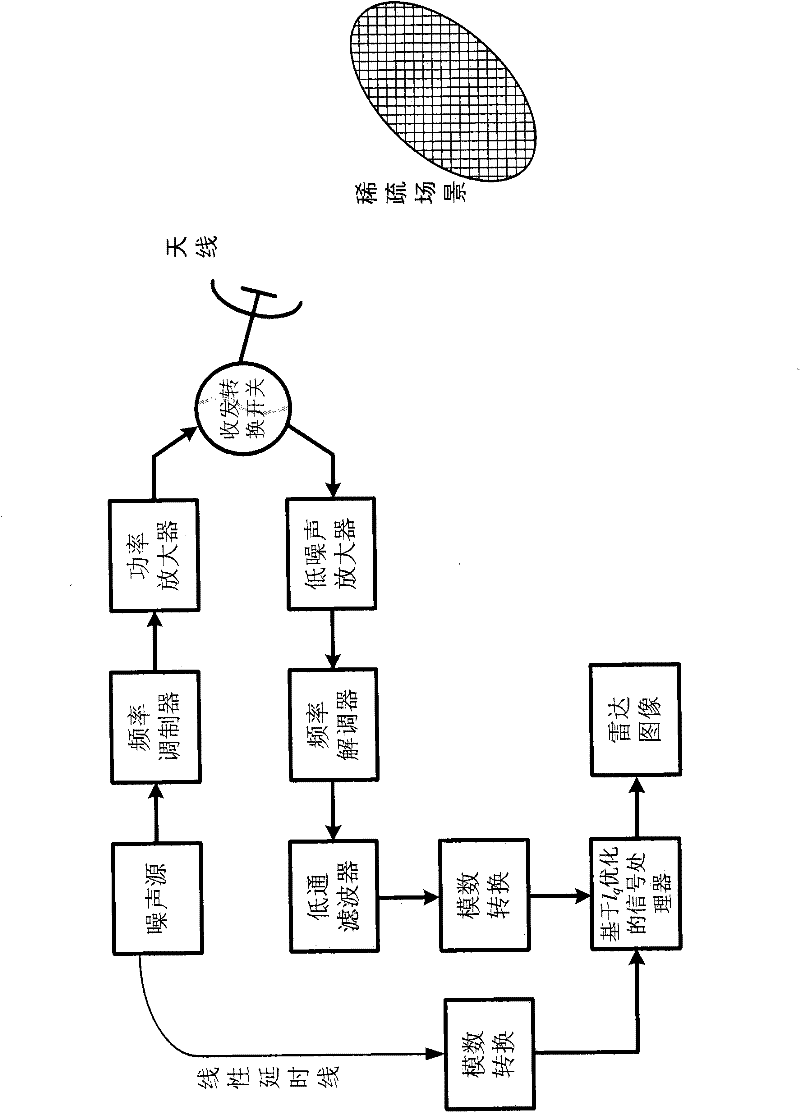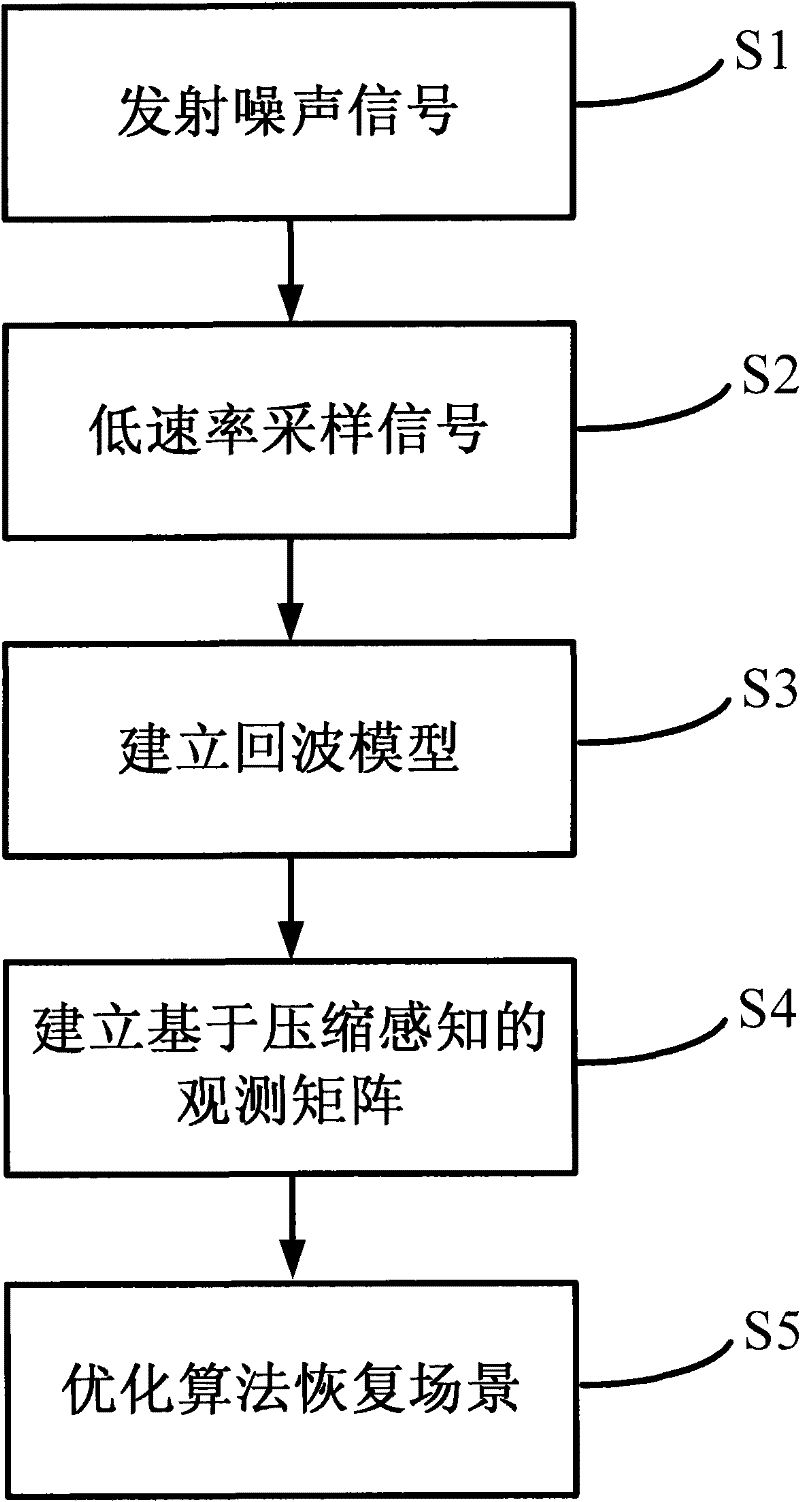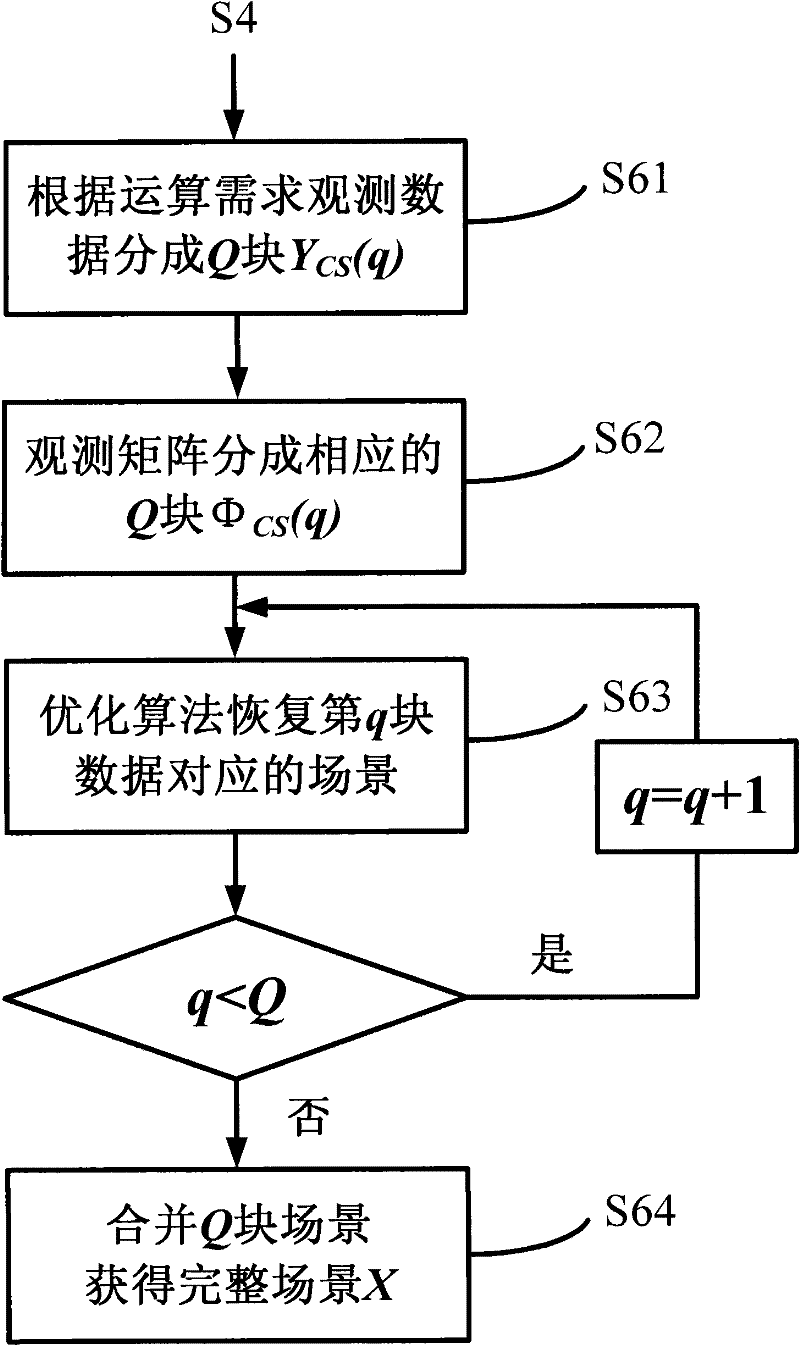Signal processing method for random noise radar applicable to sparse microwave imaging
A sparse microwave imaging and signal processing technology, which is applied in radio wave reflection/re-radiation, using re-radiation, radio wave measurement system, etc., can solve the problems of high ADC data rate, random noise radar data rate reduction, data storage capacity, Problems such as large processing capacity and transmission capacity, to achieve high-resolution effects
- Summary
- Abstract
- Description
- Claims
- Application Information
AI Technical Summary
Problems solved by technology
Method used
Image
Examples
Embodiment Construction
[0059] In radar target detection, radar imaging, SAR imaging, ISAR imaging and ultra-wideband imaging radars, in order to obtain high resolution, high signal-to-noise ratio and other performance, it is often necessary to transmit signals with a large bandwidth. According to the traditional Nyquist sampling theorem, the echo signal must be sampled at a sampling rate twice the bandwidth. The high sampling rate brings a large amount of data, and also puts a lot of processing pressure on the storage, transmission and processing of data. At the same time, traditional radar systems have a high probability of being intercepted due to the strong correlation of the transmitted signals, and their electronic anti-resistance capabilities are not strong. A random noise radar system suitable for sparse microwave imaging. The number of sampling points required is determined according to the sparse characteristics of the observed scene. Since actual scenes often have obvious sparse characteri...
PUM
 Login to View More
Login to View More Abstract
Description
Claims
Application Information
 Login to View More
Login to View More - R&D
- Intellectual Property
- Life Sciences
- Materials
- Tech Scout
- Unparalleled Data Quality
- Higher Quality Content
- 60% Fewer Hallucinations
Browse by: Latest US Patents, China's latest patents, Technical Efficacy Thesaurus, Application Domain, Technology Topic, Popular Technical Reports.
© 2025 PatSnap. All rights reserved.Legal|Privacy policy|Modern Slavery Act Transparency Statement|Sitemap|About US| Contact US: help@patsnap.com



